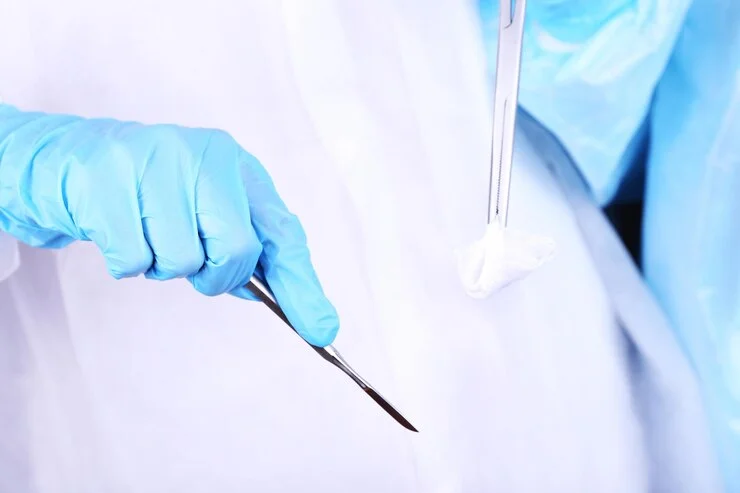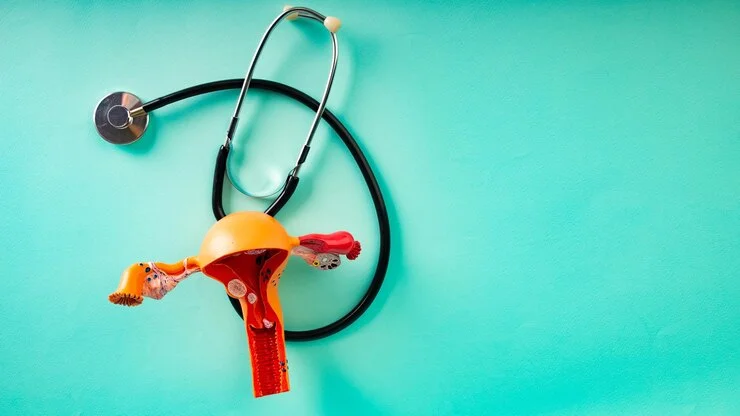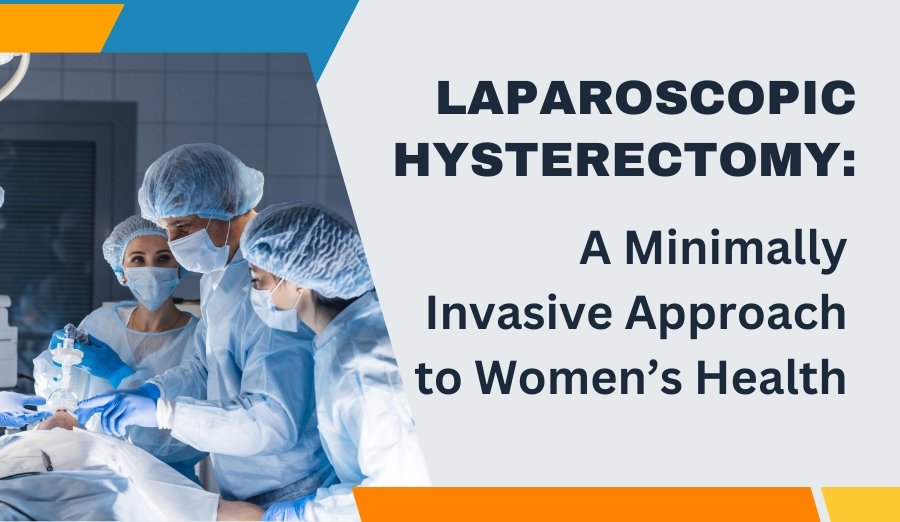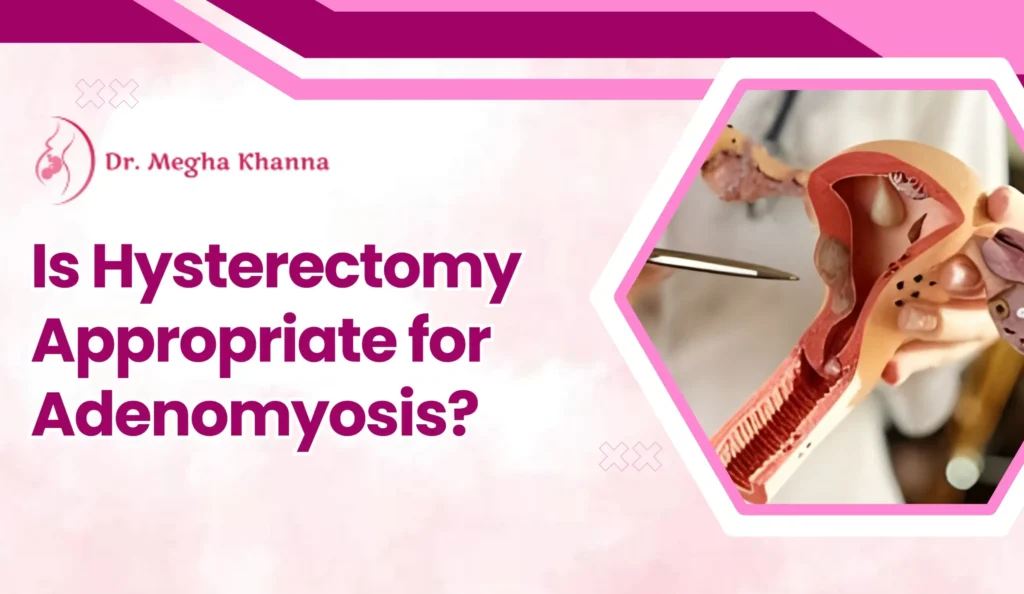-
Ganesh Talkies, Kolkata
Ganesh Talkies, Kolkata

Admins
05.12.2024
Learn effective recovery tips after laparoscopic sterilization to ensure a smooth and quick healing process. Expert advice from one of the best lady gynecologists in Kolkata. Top Recovery Tips for a Smooth Healing After Laparoscopic SterilizationUnderstanding Laparoscopic SterilizationWhy Is Recovery Important After Laparoscopic Sterilization?Best Recovery Tips After Laparoscopic Sterilization1. Prioritize Rest and Relaxation2. Manage Pain Effectively3. Care for the Surgical Site4. Resume Activities Gradually5. Stick to a Healthy Diet6. Listen to Your BodyWhat to Avoid During Recovery1. Skipping Follow-Up Appointments2. Overexerting Yourself3. Smoking or Alcohol ConsumptionSigns You Need Medical AttentionRecovery Timeline: What to ExpectFirst 24-48 Hours3-7 Days Post-Surgery1-2 WeeksFAQs About Recovery After Laparoscopic SterilizationQ1: How long does recovery take?Q2: Is it normal to feel bloated after the procedure?Q3: When can I start exercising again?Q4: What should I eat during recovery?Q5: Will laparoscopic sterilization affect my hormones?Why Expert Guidance Matters in RecoverySmooth Recovery Tips After Laparoscopic Sterilization Top Recovery Tips for a Smooth Healing After Laparoscopic Sterilization Laparoscopic sterilization is a minimally invasive and permanent solution for contraception chosen by many women worldwide. While the procedure itself is straightforward and safe, the recovery phase is crucial to its success. Proper care not only helps the body heal faster but also prevents complications and enhances the quality of life post-surgery. In this post, we will explore the best recovery tips after laparoscopic sterilization, focusing on practical advice, frequently asked questions, and professional insights to make your journey to recovery smoother. Understanding Laparoscopic Sterilization Laparoscopic sterilization is a form of tubal ligation, where the fallopian tubes are either sealed or blocked to prevent fertilization. The procedure involves small incisions and the use of a laparoscope, a thin tube with a camera, making it less invasive than traditional sterilization methods. This procedure is highly effective and comes with numerous benefits, including shorter recovery time, reduced scarring, and minimal post-operative pain. However, like any surgery, the healing process demands attention and care to ensure successful outcomes. Why Is Recovery Important After Laparoscopic Sterilization? Even though laparoscopic sterilization is a less invasive procedure, it is still a surgical intervention that requires the body to heal. Proper recovery ensures: Reduced risk of infections or complications. Better wound healing and minimal scarring. Faster return to daily activities. Long-term success of the procedure. Best Recovery Tips After Laparoscopic Sterilization 1. Prioritize Rest and Relaxation Rest is the cornerstone of recovery. Allow your body to heal by taking it easy...

Admins
02.12.2024
Women’s healthcare is being transformed by providing minimally invasive solutions to complex gynecological issues through Laparoscopic Hysterectomy. With guidance from one of the best lady gynecologists in Kolkata, patients can better understand the procedure and its benefits, ensuring informed decisions about their health. IntroductionWhat is Laparoscopic Hysterectomy?5 Ways Laparoscopic Hysterectomy is Transforming Women’s Health1. Minimally Invasive Approach for Faster Recovery2. Enhanced Precision with Advanced Technology3. Lower Risk of Post-Surgical Complications4. Supporting Emotional and Mental Well-Being5. Customized Treatment OptionsWhy is Choosing the Right Specialist Crucial?Common Conditions Treated with Laparoscopic HysterectomyHow to Prepare for a Laparoscopic HysterectomyFAQsQ1. Is Small Incision Hysterectomy safe for older women?Q2. Can laparoscopic hysterectomy treat severe fibroids?Q3. How long will I need to avoid physical activity after surgery?Q4. Does insurance cover Small Incision Hysterectomy?Q5. Will this procedure affect my hormones?Conclusion Introduction In the dynamic landscape of women’s healthcare, innovations are continuously pushing the boundaries of what’s possible. One such groundbreaking advancement is Laparoscopic Hysterectomy, a minimally invasive procedure that is steadily becoming the preferred choice for addressing various gynecological conditions. Unlike traditional open surgeries, which often involve long recovery times and visible scars, laparoscopic methods focus on precision, comfort, and speedy recovery. This article explores five significant ways Endoscopic Hysterectomy is reshaping the lives of women, offering them hope, confidence, and improved health outcomes. What is Laparoscopic Hysterectomy? Before we delve into its transformative aspects, let’s briefly understand what makes laparoscopic hysterectomy stand out. Endoscopic Hysterectomy is a surgical procedure where the uterus is removed through small incisions in the abdomen. A thin tube with a camera (laparoscope) guides the surgeon, ensuring precise movements with minimal disruption to surrounding tissues. The advanced tools and techniques involved make this method significantly less invasive than traditional approaches. This procedure is highly effective for treating conditions like fibroids, endometriosis, and abnormal bleeding while offering unparalleled patient comfort. 5 Ways Laparoscopic Hysterectomy is Transforming Women’s Health 1. Minimally Invasive Approach for Faster Recovery One of the standout benefits of Pelvic Laparoscopic Surgery is its minimally invasive nature. This technique uses small incisions instead of a large abdominal cut, resulting in: Reduced Blood Loss: Smaller incisions lead to less trauma and faster clotting. Minimal Scarring: The incisions are so small that scarring is often negligible. Quicker Recovery Times: Most women can resume their daily routines within 1-2 weeks, a stark contrast to the 4-6 weeks required after traditional surgery. This faster recovery is...

Admin
29.11.2024
Hello reader! Welcome to the blog page of Dr. Megha Khanna, one of the best lady gynecologist in Kolkata. Women’s health has seen remarkable advancements over the years, and one such breakthrough is the development of laparoscopic hysterectomy. This minimally invasive surgical procedure has revolutionized how gynecological issues are addressed, offering women a safer, quicker, and more comfortable alternative to traditional surgery. As one of the best lady gynecologist in Kolkata, Dr. Megha Khanna is committed to helping women understand this procedure and its benefits for their overall well-being. What is a Laparoscopic Hysterectomy?What are the potential risks associated with a laparoscopic hysterectomy?1. General Anesthesia Risks2. Bleeding3. Injury to Surrounding Organs4. Infection5. Vaginal Problems6. Early Menopause7. Chronic Pain8. Blood Clots9. AdhesionsHow is Laparoscopic Hysterectomy Performed?Benefits of Laparoscopic HysterectomyWho is a Candidate for Laparoscopic Hysterectomy?Preparing for the ProcedureRecovery and AftercareWhat are the main advantages of choosing a laparoscopic hysterectomy over traditional methods?1. Smaller Incisions2. Reduced Pain3. Shorter Hospital Stays4. Faster Recovery Times5. Lower Risk of Complications6. Improved Visualization for the Surgeon7. Cosmetic Benefits8. Cost-EffectivenessHow does a laparoscopic hysterectomy impact recovery time?1. Shorter Hospital Stay2. Reduced Postoperative Pain3. Faster Return to Daily Activities4. Lower Risk of Complications5. Gradual Resumption of Normal ActivitiesHow long does it take to see the full benefits of a laparoscopic hysterectomy?Immediate Recovery (First Few Days)Short-Term Recovery (1-2 Weeks)Medium-Term Recovery (3-6 Weeks)Long-Term Benefits (2-3 Months)Why Choose Dr. Megha Khanna for Your Laparoscopic Hysterectomy?FAQConclusion What is a Laparoscopic Hysterectomy? A laparoscopic hysterectomy is a surgical procedure to remove the uterus using small incisions and a specialized camera called a laparoscope. Unlike traditional open surgery, which requires a large incision, laparoscopic surgery is performed through small incisions in the abdomen, resulting in less pain and a faster recovery. This procedure is commonly recommended for conditions like: Uterine fibroids Endometriosis Abnormal uterine bleeding Pelvic pain Uterine prolapse Cancer (in some cases) As one of the best lady gynecologist in Kolkata, I emphasize educating my patients about the procedure to help them make informed decisions. What are the potential risks associated with a laparoscopic hysterectomy? Laparoscopic hysterectomy is a minimally invasive surgical procedure to remove the uterus, and while it offers several benefits over traditional methods, it is not without potential risks. Understanding these risks is crucial for patients considering this procedure. Here are the main risks associated with laparoscopic hysterectomy: 1. General Anesthesia Risks As with any surgery requiring anesthesia, there are...

Admins
28.11.2024
Discover essential tips for hysterectomy recovery to ensure a smooth and healthy healing process. Learn expert advice from one of the best lady gynecologists in Kolkata. IntroductionWhat Is a Hysterectomy?Why Is Recovery After a Hysterectomy Crucial?Best Tips for Hysterectomy Recovery1. Take Plenty of Rest2. Follow a Balanced Diet3. Engage in Gentle Physical Activity4. Manage Pain Effectively5. Monitor Your Surgical Site6. Address Emotional Well-being7. Stay Connected with Your DoctorFAQs About Tips for Hysterectomy Recovery1. How long does it take to recover from a hysterectomy?2. When can I return to work after surgery?3. Can I exercise during recovery?4. Will I experience menopause after a hysterectomy?5. How can I prevent complications during recovery?Conclusion Introduction Undergoing a hysterectomy is a major life event for many women. Whether it’s performed to manage chronic conditions, address reproductive health concerns, or alleviate severe pain, this surgical procedure marks a significant step toward better health and well-being. However, recovery from a hysterectomy requires careful attention to both physical and emotional healing. While the surgery itself addresses medical issues, the recovery process determines how smoothly you regain your strength and adjust to the changes. Let’s explore the best tips for hysterectomy recovery to help you navigate this important phase of your health journey. What Is a Hysterectomy? A hysterectomy is a surgical procedure to remove the uterus. Depending on the medical condition, the surgery may also involve removing the ovaries, fallopian tubes, and cervix. This procedure can be classified into different types: Total Hysterectomy: Removes the uterus and cervix. Partial Hysterectomy: Removes only the uterus. Radical Hysterectomy: Removes the uterus, cervix, surrounding tissues, and part of the vagina, usually for cancer treatment. Hysterectomy with Oophorectomy: Includes the removal of one or both ovaries. The recovery process varies based on the type of hysterectomy performed, but with proper care, most women can resume normal activities within a few weeks. Why Is Recovery After a Hysterectomy Crucial? Recovery after a hysterectomy is not just about physical healing. It involves emotional adjustment, hormonal changes, and lifestyle modifications. Proper recovery is essential to: Allow surgical wounds to heal completely. Prevent complications like infections, blood clots, or organ damage. Help the body adapt to hormonal changes, especially if the ovaries were removed. Restore energy levels and overall well-being. By following structured recovery tips, you can ensure a smoother transition into this new phase of life. Best Tips for Hysterectomy Recovery 1. Take Plenty of...

25.10.2025

13.10.2025